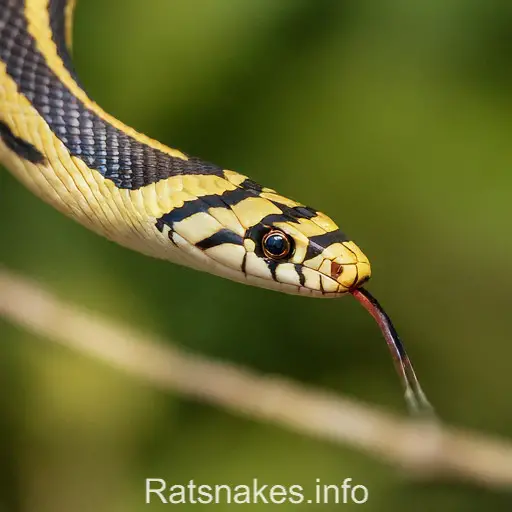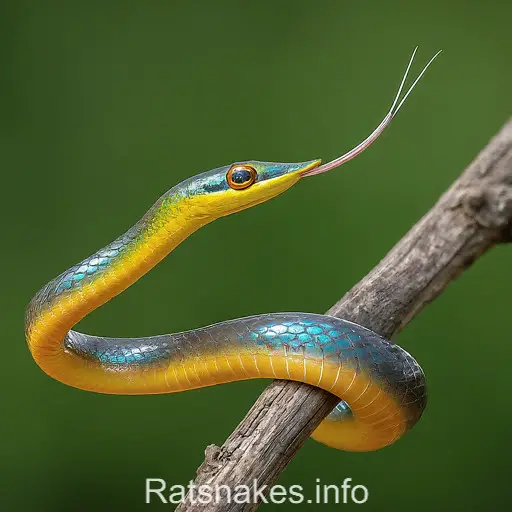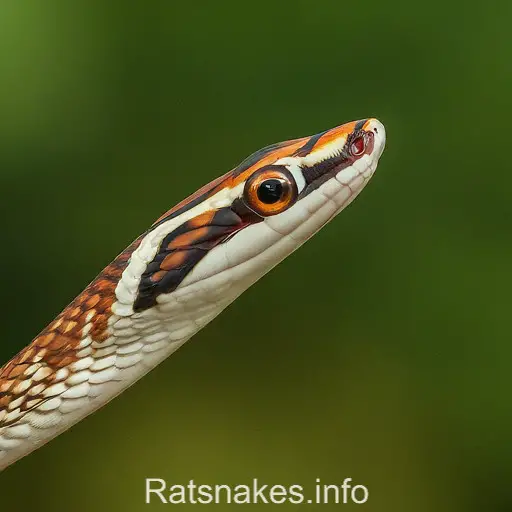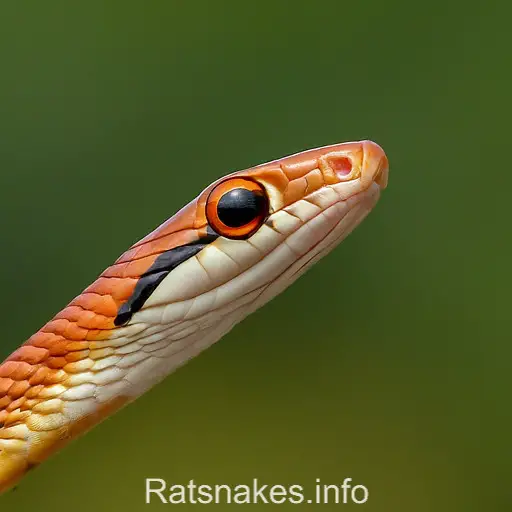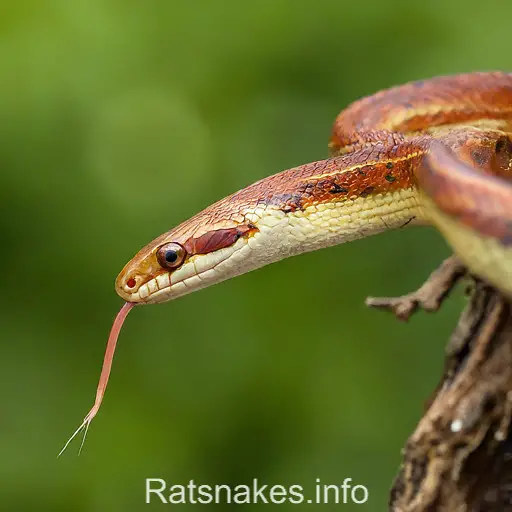
Welcome to our guide on the fascinating Mandarin rat snake! These striking reptiles are known for their vibrant colors and unique patterns, making them a favorite among snake enthusiasts. In this article, we’ll delve into the characteristics, habitat, and behavior of the Mandarin rat snake, shedding light on what makes them such intriguing creatures.
Native to regions of Southeast Asia, Mandarin rat snakes are non-venomous constrictors that play a vital role in their ecosystems. With their slender bodies and agile movements, these snakes are expert hunters, preying on small mammals, birds, and other reptiles. Join us as we explore the world of the Mandarin rat snake and uncover the secrets of this mesmerizing species.
Characteristics of Mandarin Rat Snake
When it comes to Mandarin rat snakes, there are several key characteristics that set them apart:
- Vibrant colors: These snakes are known for their stunning and vibrant colors, which can range from bright orange and red to yellow and green.
- Unique patterns: The Mandarin rat snake sports distinctive patterns that make each individual unique, adding to its allure.
- Slender body: With a long and slender body, these snakes are agile and adept at climbing trees and navigating through their natural habitat.
- Non-venomous: Unlike some other snake species, the Mandarin rat snake is non-venomous, relying on constriction to subdue its prey.
- Smooth scales: Their scales are smooth to the touch, giving them a sleek appearance and making them efficient hunters.
- Distinctive head: With a slightly flattened head and round eyes, the Mandarin rat snake has a distinctive look that sets it apart from other snakes in the region.
These unique characteristics make the Mandarin rat snake a fascinating species to observe in the wild or in captivity.
Habitat of Mandarin Rat Snake
When it comes to the habitat of the Mandarin rat snake, we can find these fascinating creatures in a variety of environments. Here are some key points to consider:
- Native to: Southeast Asia, specifically regions like Vietnam, China, and Taiwan.
- Preferred habitats: Mandarin rat snakes are commonly found in forests, woodlands, and grasslands.
- Behavior: They are mainly arboreal, meaning they are adept climbers and often inhabit trees. However, they can also be found on the ground.
- Temperature: These snakes thrive in warm climates and are typically active during dawn and dusk.
- Camouflage: Their vibrant colors and unique patterns help them blend seamlessly with their surroundings, making them expert ambush predators.
In their natural habitat, Mandarin rat snakes play a vital role in maintaining the ecological balance. The combination of their hunting skills, adaptability, and distinct characteristics makes them a truly remarkable species to study and appreciate.
Behavior of Mandarin Rat Snake
- Nocturnal Behavior: Mandarin rat snakes are primarily nocturnal, being most active during the night, when they hunt for prey using their keen eyesight and heat-sensing abilities.
- Arboreal and Terrestrial: These snakes exhibit both arboreal behavior by climbing trees and bushes in search of food, as well as terrestrial behavior when hunting on the ground.
- Expert Climbers: With their slender bodies and specialized scales, Mandarin rat snakes are expert climbers, able to navigate trees with agility and stealth, making them formidable predators in their habitat.
- Camouflage and Ambush Predators: Using their vibrant colors and unique patterns, Mandarin rat snakes blend into their surroundings, relying on camouflage to ambush unsuspecting prey effectively.
- Solitary Creatures: Mandarin rat snakes are solitary animals, usually found alone except during the breeding season, when they may come together to mate.
- Defensive Behavior: When threatened, these snakes may exhibit defensive behavior, such as hissing, vibrating their tails, and striking if necessary, as a means of self-defense.
Interesting Facts about Mandarin Rat Snake Behavior
| Fact | Details |
|---|---|
| Unique Hunting Strategy | They rely on their agility and camouflage to silently approach prey. |
| Social Interaction | Limited to mating and competition for resources. |
| Habitat Selection | Prefers areas with ample hiding spots for ambush hunting. |
| Reproductive Behavior | Mating rituals involve specific movements and courtship displays. |
| Territorial Defense | Mandarin rat snakes may defend their territory from other snakes. |
Importance of Mandarin Rat Snake in Ecosystem
- Mandarin rat snakes play a crucial role in controlling rodent populations, which can pose a threat to agricultural crops and spread diseases.
- As predators in their habitats, these snakes help maintain a balance in the ecosystem by keeping smaller animal populations in check.
- By preying on rodents, the Mandarin rat snake indirectly contributes to biodiversity preservation by preventing certain species from becoming overly abundant.
- Moreover, these snakes are essential indicators of ecosystem health, as their presence reflects a well-functioning and balanced natural environment.
- Their hunting behavior also helps regulate insect populations, reducing the damage caused by pests to plants and other organisms in the ecosystem.
Key Takeaways
- Mandarin rat snakes are non-venomous constrictors native to Southeast Asia with vibrant colors and unique patterns.
- They are expert hunters with slender bodies, agile movements, and distinctive heads, primarily feeding on small mammals, birds, and other reptiles.
- Mandarin rat snakes are commonly found in forests, woodlands, and grasslands, thriving in warm climates and displaying both arboreal and terrestrial behaviors.
- These snakes are primarily nocturnal, arboreal climbers, and solitary animals, using camouflage for ambush predation and defensive behavior when threatened.
- Mandarin rat snakes are important for controlling rodent populations, maintaining ecosystem balance, and preserving biodiversity.
- Their presence indicates a healthy ecosystem and helps regulate insect populations, benefiting the overall ecological health.
Conclusion
Mandarin rat snakes play a crucial role in maintaining ecosystem balance by controlling rodent populations and regulating insect numbers. Their presence signifies a healthy environment and supports biodiversity. These snakes are vital predators that help protect agricultural crops and prevent the spread of diseases. By managing smaller animal populations, they contribute to the overall well-being of the ecosystem. The hunting behavior of Mandarin rat snakes aids in reducing damage caused by pests, benefiting plants and other organisms. In essence, these snakes are essential components of a functioning ecosystem, showcasing nature’s intricate web of interactions.

